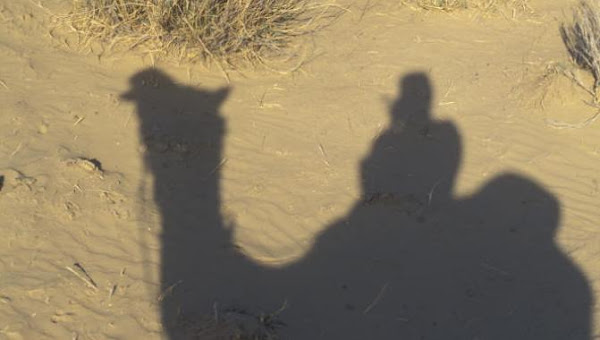The body was willing, the spirit even more. Khajuraho is an invitation to experience the unknown form, made visible on stone carvings that capture the celestials in all their moods.
Khajuraho, situated in the Chhatarpur district of Madhya Pradesh, is 55 kms south of Mahoba, 47 kms east of Chhatarpur Town, and 43 kms north west of Panna; and is accessible by surfaced roads from Mahoba, Harpalpur and Satna railwaystation on the Central Railway. For those traveling from Bombay, a direct train from V.T. takes you to Satna, the journey-time being roughly 22 hours. The most convenient mode would be to take a train reaching at about 4.00 a.m. in the morning at Satna, since there is a direct bus service leaving the Satna bus stand at 5.00 a.m. The distance of 117 kms from Satna to Khajuraho takes about 4 hours. A daily air service also links Khajuraho with Delhi, Agra and Varanasi.
In the olden days, Khajuraho was known as Khajivahila which meant ‘Garden of Dates’, and continues to be only a small village, with about 6000 inhabitants- their distinct quality being total nonchalance to the massive daily influx of tourists, with quiet serenity written on their faces. The locals, by their unobtrusiveness, succeed in maintaining thebalance of the on-to-one relationship between man (the wonderful creator), and his creation (the temples) totally undisturbed.
What attracts tourist is the past architectural splendour of the remains of 22 temples built by the Chandella dynasty around a thousand years ago.
Khajuraho boasts of some of the finest temples ever built. Their distinctive feature is carvings of ethereal beauty on sandstone brought from the quarries of Panna on the east bank of the Ken river. The unique temple structure built on a high platform, gives an impression of a vast open promenade round the temple. These temples are interconnected, and built on a single axis running in an east-west direction, and have 3 main compartments namely: the entrance known as ‘ardha mandapa’, the assembly hall – ‘mandapa’ the assembly hall – mandapa’ and the inner sanctum-garbha-griha’ . The central dome is surrounded by balconied windows, which admit light into the interiors, making the interplay of light and darkness a spectacular affair. The compartments have their own roofs, which rise from their lowest over the entrance porch, to their highest over the sanctum. When seen from a distance, these roofs resemble Mount Kailasa with which the Hindu temple is compared.
The temples groups could broadly be divided into 3, namely the western, southern and eastern. The piece de resistance is the western group from which rise the Kandariya Mahadeva and the Lakshmanna temples.“What makes Khajuraho tick?”, you may ask. Or, what draws hordes of visitors to this nondescript place, barely visible on the map of India? The uniqueness of this place is the sculptures in the temples which have been carved in every nook and corner. Sensuous forms of gods and goddesses captured in various poses that maintain their expressiveness to this day. Basically, five categories of sculptures are used; the first form being the use of images designed and made in round form, the second comprises the parivara, parsva and avarna devatas (family, attendants and enclosing divinities) which are seen on the walls of the temples, the third consists of those celestial beauties most frequently seen on the walls of the temples, the third consists of those celestial beauties most frequently seen on the walls of the temples, as well as on the pillars and ceilings: the famed ‘apsaras’ and ‘sura-sundaris’. These figures are shown in various poses which express moods, desires and emotions so akin to human behaviour. In the fourth category are use of secular sculptures performing group activities in which you witness groups of teachers with their students. The fifth and the last category has depictions of animal forms such as the boar, elephant, parrot, etc., and also has the manifestation of the’vyala’ and’sardula’ forms which consist of horned lions with armed riders.
The temples of Kandariya Mahadeva, Lakshmanna and the Visvantha. Temple are the prime examples of completeness in terms of layout and design, as well as their use of various forms of sculptures without parallel. The Lakshmanna Temple has the Ardha Mandapa, and the Garbha-Griha, besides the 4 affiliated shrines places at the corners. Being a developed temple in terms of construction and design, you also see numerous incarnations of Vishnu, besides scenes from the life of Krishna. The borders of the temples have bands that display different themes on day-to-day life life such as street singers, a lady in the act of putting on her make-up, revelers at a gathering, labourers at work, etc. Apsaras and other well-carved female figures also adores these temple forms. The Kandariya Mahadeva temple is structurally different from the other western group temples, where, the style used seems to suggest less of symmetry and more of projections and recesses all carved with a rare sense of rhythm and continuity. The beauty of this temple lies in the creation of grades of ascending order of replicas which culminates in the dome which is delicately carved and is a visual delight. Extensive use of sculptures at every conceivable nook and corner make this the highest rated temple in Khajuraho. Erotic scenes, use of mithunas and dancing gods, well shaped and svelte apsaras in passionate postures adorn the outer walls of temples. The construction of this temple dates back to reign of vidyadhara and is said to have been built in 1025-60 AD.
The Visvanatha temple has the Siva Lingam and, in terms of design, design, displays the characteristics of a complete temple and also has exhibits that are well and delicately carved. Khajuraho depicts the forces of man and woman as the human counterpart of the cosmic function of creation: the pull between the principles becomes the source of all life and creation. Thus, the joy of physical union symbolically reflects the infinite joy of divinity in creation. It is said that an artist’s creation is unfinished as long as he is alive. In the case of Khajuraho, the artists’ striving for perfection is evident from the sculptures that appear alive to this day. This feature alone makes a visit to Khajuraho so appealing.












No comments:
Post a Comment